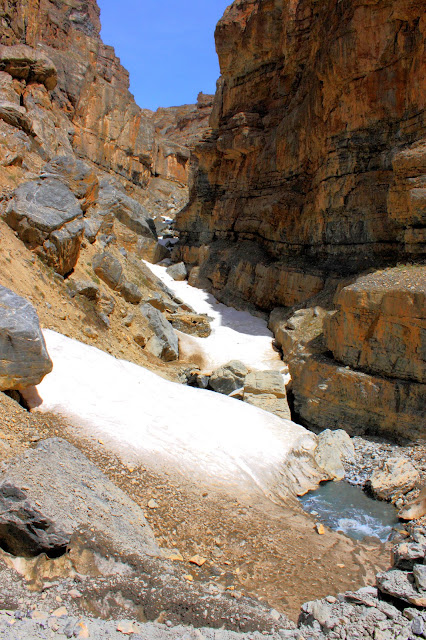What did you do with a lovely necklace your father once gifted you? Replaced its natural, sparkling pearls with the new, ('funky', henn?), artificial ones? Well we've actually being doing so with our heritage since times immemorial. Oh, by the way-
Happy Word Heritage Day! On the 18th of April, 2013 comes this very special day. Special to millions of people around the world who've known that ecstasy and excitement every time they enter a piece of our great heritage;
the gates of a bygone era.
Heritage is not of archaeological nature always; it comes in various forms. Natural heritage, Cultural heritage, Food heritage, etc. But heritage in any form always has something inevitably attached to it: and that is
history.
History makes heritage special; history makes heritage what it is. After all, something from the past we've received is what our heritage is.
And since history is the past; it is often forgotten; what then remains is its heritage.
Look around at this amazing world: you'll find hundreds of thousands of monuments, ancient sites, places of worship, old mansions, wildlife reserves, our parks, sanctuaries, etc.
They're in plenty, but they're losing their health. Yes, unfortunately, our heritage is no longer healthy.
(Photo: The Hawa Mahal, Rajasthan. Not all heritage is fortunate enough to witness daylight, let alone become famous)
Sometimes, heritage is robbed of its very
nature; it no longer remains a rich fragment from our past when it is suppressed under the massive torments of modern times. Ancient castles and mansions are often demolished to make way for newer, 'modern' constructions. Likewise, many ancient sites and areas still
lie unexplored, unknown, unprotected, forgotten.
Natural heritage has for long been misused, so much so that we are on the very edges of an immense void in the near future, when all that would remain would be a giant hollow. We've destructed our lush green forests, poached our wildlife, polluted the rivers, spoiled the air, oil-spilled our oceans: in fact we've not left anything untouched by the dirty demonous hands in the name of 'modernization'.
The good news: many organizations like the UNESCO have been doing amazing work to bring back our heritage from the clutches of extinction. Many ancient places have been declared as 'World Heritage Sites' the world over. Yet, our heritage is still unhealthy.
Now is the time to rise.
Sometimes I wonder how our heritage is so
varied. Talking about the archaeological remains, they are so many in number, just here in India itself, that we can't possibly explore them all in our lifetime. And consider that hundreds of thousands of them are still buried under the earth, waiting to be discovered someday. When we are out on the shoots of our show,
"Bharat Darshan: Exploring the Unexplored" (for those of you who've visited for the first time, Bharat Darshan is a TV show telecast weekly on Doordarshan network, India. You can watch it online on our channel: www.youtube.com/SukhnidheyFilms), we witness hundreds of such monuments and ancient sites every season.
 (Photo: Most fragments from our past now lie abandoned, existing but with their own shadow devoid of human recognition)
(Photo: Most fragments from our past now lie abandoned, existing but with their own shadow devoid of human recognition)
Its a formidable task uncovering the secrets and objectives behind the construction of our magnificent monuments and heritage; each episode takes months pre-production and research. One of the reasons is the lack of any traceable history and written records on these monuments. When they've not been taken care of by the common people in the present, who cares to write them as pieces of history?
Time slips; the present becomes history too, the cycle continues, and these ancient sites soon lose their
very identity.
When I witness any such site or a piece of our heritage; it is easy to lose ourselves completely admiring its rich past, tales of its times, its rich glory and splendor; but
what remains is this story being brought before the whole world. That is what our whole team @Bharat Darshan: Exploring the Unexplored aims at. Bringing our wonderful heritage in all its beauty and incredibility before the world so that it can inspire awe in the millions of eyes who might then understand the elements of their fragile existence.
To know more about
Sukhnidhey Films, our organization which produces
"Bharat Darshan", visit the website:
www.sukhnidhey.com
To know more about the show
"Bharat Darshan: Exploring the Unexplored", visit us at:
http://www.sukhnidhey.com/bharat_darshan_exploring_the_unexplored





